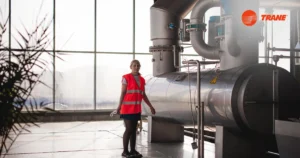Introduction: The Role of Portable Cold Storage in Modern Business
Businesses across food, pharmaceuticals, and logistics are under constant pressure to maintain product integrity while balancing cost and flexibility. Traditionally, this meant investing in permanent cold storage facilities. Today, however, portable cold storage has emerged as a viable alternative, giving companies the freedom to adapt to shifting demand, seasonal spikes, and unexpected disruptions. But how do these two options compare, and which is right for your business?
Traditional Cold Storage: Strengths and Limitations
Permanent cold storage facilities remain essential for many industries. Their strengths include:
- High capacity: Suitable for large-scale storage of bulk goods.
- Long-term stability: Infrastructure designed for decades of use.
- Integrated logistics: Often connected directly to supply chain hubs.
Yet, these strengths come with trade-offs:
- High upfront investment: Capital-intensive to build and maintain.
- Limited flexibility: Fixed in one location and size.
- Long lead times: Construction and commissioning can take months or years.
For stable, predictable operations, traditional facilities remain valuable. But in an increasingly uncertain world, they may not always be enough.
Portable Cold Storage: Agility for Today’s Challenges
Portable cold storage offers a modern alternative designed for speed and flexibility. Its advantages include:
- Rapid deployment: Units can be operational within hours.
- Scalability: Storage capacity can be increased or reduced as needed.
- Mobility: Containers can be relocated to match shifting demand.
- Cost efficiency: No need for major capital expenditure.
Potential drawbacks include:
- Smaller capacity: Not suited for mega-scale operations.
- Temporary by design: Best for short- to medium-term use rather than permanent infrastructure.
For industries facing seasonality, sudden market changes, or geographic expansion, these features make portable storage indispensable.
Key Comparison: Portable vs Traditional
To help decision-makers, here’s a side-by-side view:
| Criteria | Traditional Facilities | Portable Cold Storage |
| Investment | High capital cost | Operational expense (rental model) |
| Deployment Speed | Months to years | Hours to days |
| Flexibility | Fixed capacity and location | Scalable and mobile |
| Best Use Case | Stable, predictable operations | Seasonal, urgent, or flexible needs |
| Sustainability Impact | Dependent on design and refrigerants | Modern units offer efficient tech |
This comparison highlights how both options serve different business contexts.
Which Industries Benefit Most from Portable Solutions?
Certain industries are especially well-suited to portable cold storage:
- Food and Beverage: Seasonal peaks during harvest or holidays.
- Pharmaceuticals: Temporary storage during vaccine or drug distribution campaigns.
- Retail and E-commerce: Rapid growth requiring immediate, scalable solutions.
- Events and Catering: On-site cold storage for large functions.
- Logistics: Bridging gaps when permanent facilities are under renovation or over capacity.
For these industries, flexibility often outweighs capacity, making portable solutions the smarter choice.
The Sustainability Advantage of Portable Units
Modern portable cold storage integrates eco-friendly refrigerants and energy-efficient compressors. For businesses under pressure to meet climate targets, this ensures sustainability without sacrificing reliability. Additionally, the ability to deploy units only when needed prevents wasted energy from maintaining unused space.
Why Trane Offers the Best of Both Worlds
Trane recognises that businesses need more than equipment — they need solutions tailored to operational realities. Trane’s offering stands out because it combines:
- Engineering expertise to ensure precise temperature control.
- Global scale with local support for rapid deployment.
- Flexible rental options that avoid capital expenditure.
- Commitment to sustainability, aligning storage with environmental goals.
- Proven reliability, ensuring uninterrupted operations even under pressure.
This integrated approach allows organisations to find the right balance between traditional infrastructure and portable innovation.
Making the Right Choice for Your Business
The decision is not about replacing one option with the other, but about choosing the right tool for the right context:
- If your operations are stable and long-term, traditional facilities may be the best investment.
- If your business faces volatility, growth, or seasonality, portable cold storage adds essential flexibility.
- Many organisations benefit from a hybrid strategy, combining both permanent and portable solutions.
The key is aligning cooling strategy with business goals — efficiency, resilience, and sustainability.
Conclusion: Extending Comfort with comfort cooling
In an unpredictable world, cooling strategies must be as flexible as the businesses they support. Portable cold storage provides agility, speed, and cost efficiency, while traditional facilities deliver scale and long-term stability. Trane helps businesses integrate both approaches, ensuring that supply chains remain reliable and products stay safe. Beyond cold storage, Trane’s solutions extend to scalable comfort cooling, creating environments that protect goods, empower people, and strengthen business resilience.




